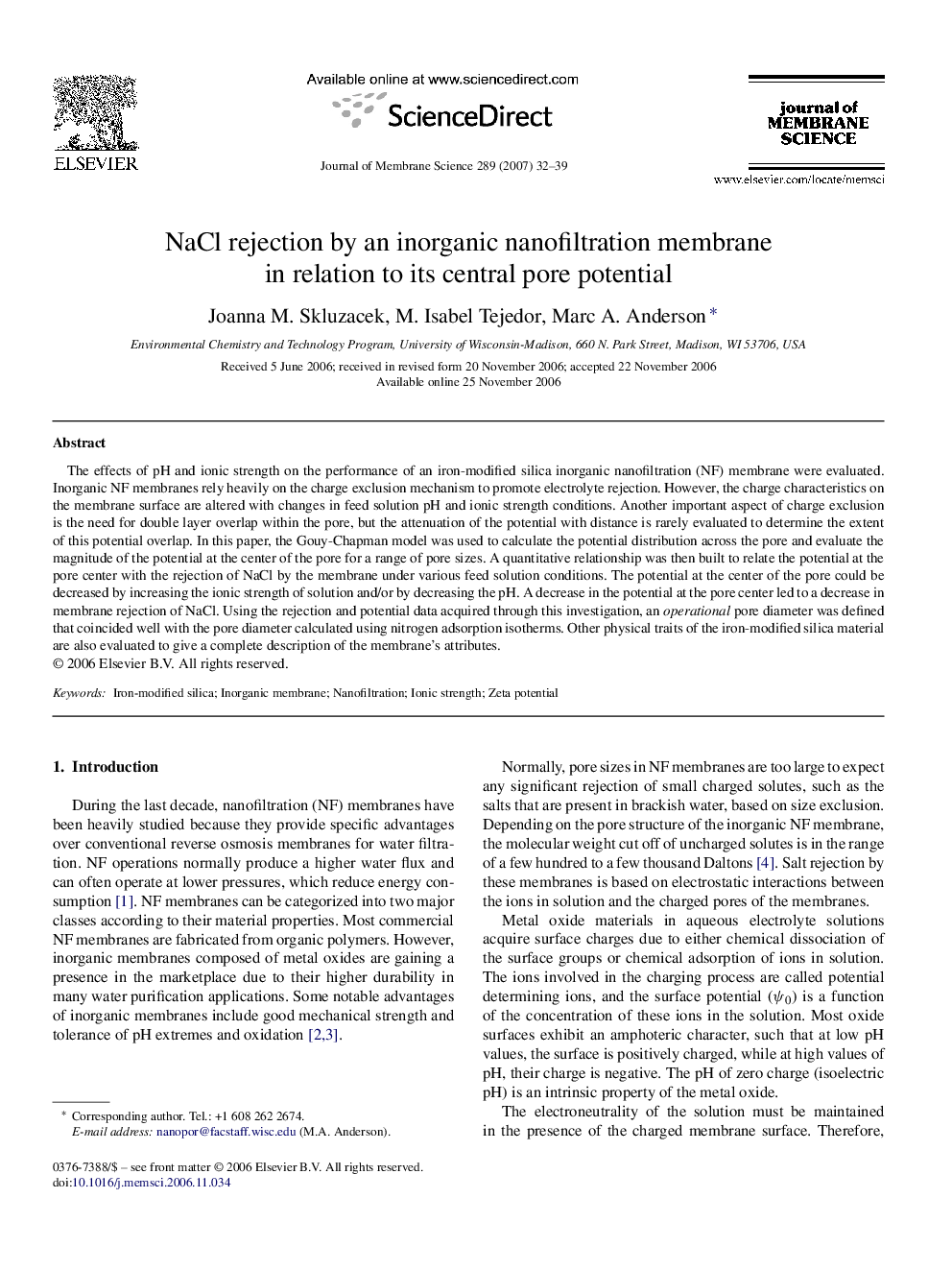| Article ID | Journal | Published Year | Pages | File Type |
|---|---|---|---|---|
| 638790 | Journal of Membrane Science | 2007 | 8 Pages |
The effects of pH and ionic strength on the performance of an iron-modified silica inorganic nanofiltration (NF) membrane were evaluated. Inorganic NF membranes rely heavily on the charge exclusion mechanism to promote electrolyte rejection. However, the charge characteristics on the membrane surface are altered with changes in feed solution pH and ionic strength conditions. Another important aspect of charge exclusion is the need for double layer overlap within the pore, but the attenuation of the potential with distance is rarely evaluated to determine the extent of this potential overlap. In this paper, the Gouy-Chapman model was used to calculate the potential distribution across the pore and evaluate the magnitude of the potential at the center of the pore for a range of pore sizes. A quantitative relationship was then built to relate the potential at the pore center with the rejection of NaCl by the membrane under various feed solution conditions. The potential at the center of the pore could be decreased by increasing the ionic strength of solution and/or by decreasing the pH. A decrease in the potential at the pore center led to a decrease in membrane rejection of NaCl. Using the rejection and potential data acquired through this investigation, an operational pore diameter was defined that coincided well with the pore diameter calculated using nitrogen adsorption isotherms. Other physical traits of the iron-modified silica material are also evaluated to give a complete description of the membrane's attributes.
